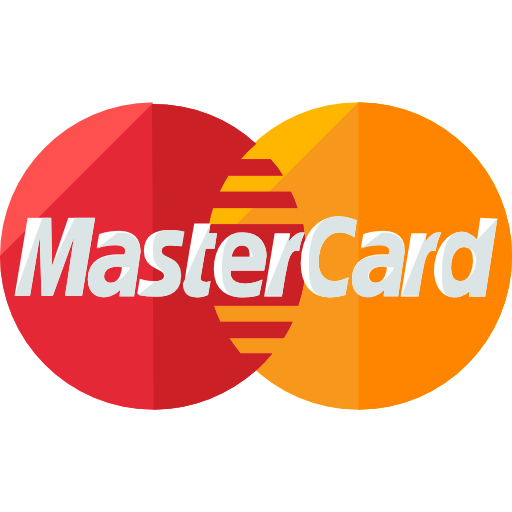News
POS Programmable Keyboard Philippines Grand Tech Int’l. Ent. Corp.
Tuesday, February 1, 2022Table of Contents
Introduction
What Is a POS Programmable Keyboard in the Philippines?
What Is the History of Programmable Keyboards?
- The Emergence of the Typewriter
- The First Electronic Breakthrough
- The Continuous Development of Technology
What Should You Consider When Purchasing a POS Programmable Keyboard in the Philippines?
- Kind of Store
- Keystrokes or Switches
- Compatibility
- Design
- Wired vs. Wireless
- Extra Function Keys
- Price
How Do You Maintain the Quality of Your POS Programmable Keyboard in the Philippines?
- Use the Right Cleaning Tools
- Be Careful of Wires
- Press Keys Gently
- Cover After Every Use
- Handle Batteries With Care
Where Can You Buy POS Programmable Keyboards in the Philippines?
Conclusion
POS Programmable Keyboards in the Philippines and How They Can Help Your Business
Introduction
Most business owners have installed point of sale (POS) systems in their shops to oversee their daily operations better. These systems are comprised of various hardware, including cash drawers, touch monitors, printers, and more. Using these electronic cash registers can improve inventory management, shorten the checkout process, and receive real-time sales data reports.
In fact, a recent report from Business Wire, a Berkshire Hathaway company, showed that “the Southeast Asia POS Terminal Market is expected to reach a compound annual growth rate of 32.4% during the forecast period 2021 – 2026.” Experts have attributed this to the growing middle-class income on top of the increasing utilization of online payments.
If you’re looking for a reliable supplier of POS programmable keyboards in the Philippines, then Grand Tech Int’l. Ent. Corp. can help you. We offer a range of products from various brands, including EC Electronics, Limited.
What Is a POS Programmable Keyboard in the Philippines?
A POS programmable keyboard is a device that lets you assign custom actions to various keys. It is one of the main elements of a POS system, where it is connected to other pieces of hardware, such as a customer pole display, monitor, barcode scanner, and more.
Most establishments have this apparatus because of the various benefits it provides store owners. Since it lets them create shortcuts, it helps their cashiers accurately input the items people have purchased. It also ensures that their customers aren’t waiting in line for too long, which helps boost the store’s reputation and ultimately affects their sales.
What Is the History of Programmable Keyboards?
The Emergence of the Typewriter
Christopher Latham Sholes, an American inventor and newspaper publisher, patented the first practical modern typewriter in 1868. The improvements he made on his initial model brought him to more patents. However, he had a hard time raising capital for further production, which is why he sold his patent rights for $12,000 to the Remington Arms Company.
This firm began mass marketing the first typewriters, which had various distinct features, including:
- Cylinder – Has a line-spacing and carriage return mechanism
- Escapement – Causes the letter spacing by carriage movement
- Typebar – A steel arm that is triggered by the pressing of keys
To use one, all you needed to do was press a key, which would push a metal hammer that would strike an inked ribbon to make a mark on the paper. Afterward, the mechanism would return to its original position. It is important to note that Sholes’ patent included the QWERTY layout, which is now commonly seen on both virtual and physical keyboards
The earliest models of the cash register used a similar mechanism. However, instead of having letters, its keypads had numbers, enabling business owners to note the total sales amount on a particular day.
The First Electronic Breakthrough
Typewriters were the primary means of data entry from the early 1940s to the late 1960s. However, with the development of technology, researchers began experimenting with direct keyboard input to their computers.
Douglas Ross is a teaching assistant in the Massachusetts Institute of Technology mathematics department who connected an electrically controlled typewriter to a computer. His invention became the first computer in the world that let its users enter commands through a keyboard. Additionally, it showcased just how valuable and convenient the addition of this input device is.
This enabled POS systems to upgrade from mechanical to electronic tills. In 1985, the International Business Machines Corporation produced a computer-based POS system called the IBM 4683. It had a cash drawer, keyboard, customer pole display, and handheld barcode scanner.
The Continuous Development of Technology
As the years passed, manufacturers enhanced the designs of keyboards to ensure that they were more ergonomic. It isn’t any different for POS keyboards, which is why there are models that have fully customizable color keycaps to allow for easy visual recognition of standard functions.
What Should You Consider When Purchasing a POS Programmable Keyboard in the Philippines?
It would be best to go through the following before buying a POS keyboard:
Kind of Store
There is a range of programmable keyboards available on today’s market. Some have more keys than others, making them perfect for stores with a broader range of products. It wouldn’t be the best idea to invest in one that has too many keycaps when you only have limited kinds of products. You may also consider models that have the standard QWERTY layout.
Keystrokes or Switches
Make sure to check the keystrokes when buying a keyboard. You don’t want to end up with one that will give you a hard time inputting data. Although the final choice would be preferential, it is essential to note that some models require a soft and feather-like touch while others require extra pressure.
The mechanism that makes your keys respond to touch is called a switch. There are three primary types of switches used by most manufacturers, which are:
- Rubber Dome Switches – These feature a collapsible rubber ring to provide resistance and tactility to keys. Their simple design makes them a more budget-friendly option to consumers.
- Scissor Switches – They have keys attached to the keyboard using two plastic pieces that interlock in an X shape. When you press down on a keycap, the two pieces close together.
- Mechanical Switches – Commonly used by gamers due to their durability, these have a variety of response, noise, and travel times. Some keys give you tactile feedback, while others create a unique clicky sound.
Compatibility
Nowadays, keypads are connected to computers via USB ports. Older models used to have PS/2 ports, a mini DIN plug with six pins and is often found on most IBM-compatible units. However, with the development of technology, experts have also created wireless POS programmable keyboards in the Philippines that can be connected to your system via Bluetooth.
It is important to remember that regardless of which one you’re eyeing, you need to make sure that the POS programmable keyboard you got is a good fit for the software you’ve installed. Some applications require a keypad with specific keys or built-in card readers, so it may be best to double-check everything before shelling out some cash. This way, you won’t risk wasting money or going through an arduous refund process.
Design
There is a range of POS programmable keyboards on the market with varying designs. Some have a matrix of 5x12 or 7x12 keys, and depending on your needs, you can equip and label them with dummy, single-, double-, or four-way keys. On the other hand, other models only have alphanumeric or purely numeric keypads.
Each style has a type of establishment that best suits it. However, both are incredibly beneficial for businesses because they are easy to customize. Additionally, POS keyboards aren’t just like any other keyboard. Their connection to your system as they’re hooked up to card readers, key locks, and operator displays can help shorten your customers’ waiting time. Plus, if you start assigning categories or items to keys, you can enhance the productivity of your employees and boost sales.
Wired vs. Wireless
As its name implies, a wired keyboard is plugged into the computer through a cable. These models are usually cheaper and have a longer lifespan than their wireless counterparts. If you choose to get one from a trusted brand, you can expect it to last you for at least 10 to 30 years. However, those made with more affordable membrane or rubber domes may only last you for a maximum of two years.
On the other hand, wireless POS keyboards are pricier because of the technology they have to use. They utilize radio waves to transmit data from the keyboard to the computer. Some find the higher cost well worth it since they find these models much more convenient as they do not need to manage or plug in any cables.
Despite the pros and cons of wired vs. wireless keyboards, one can say there is no clear answer as to which is better. It all depends on what you need it for and how much money you want to spend. Consulting with employees who typically handle your cashiers can also help you gain more insight into which one would be best to purchase. This is because they will have first-hand knowledge on how it is to operate each type while on the clock.
Extra Function Keys
Usually found on the top row of keyboards, extra function keys are those that are not included in the standard QWERTY layout. They usually aren’t used for typing letters, numbers, or symbols. Most of the time, these keys can open applications or redirect users to a specific landing page with just one click.
Some of the common extra function keys include:
- Esc Key – Used to exit from any program and return to the desktop
- F1 to F12 Keys – Used for shortcuts in various programs or product hot keys
- Ctrl Key – Used to control what happens in a program when you press another key at the same time
- Alt Key – Used as a modifier key to help provide alternate input and operations when pressed in combination with other keys
Price
You should first list down the stores that sell POS programmable keyboards in the Philippines and note how much their products cost before you buy one. This is because the prices for these devices may vary from one retailer to another. Accurately comparing how much you have to spend versus the amount you can save will help you make an informed decision.
During the process, you should never forget that the price of the keyboard is usually determined by the quality of the materials the product is made of. The more expensive an item is, the higher grade it is likely to be. This is why if you want a durable option that will last you for years to come, then you will have to set aside more cash for this investment.
However, one thing you can do to ensure that you don’t overspend is to set a strict budget. Figure out what features are essential to your business and which product specifications you can do away with. By doing so, you can determine which models you should look into.
If you’re having difficulty which POS programmable keyboard in the Philippines best meets your needs and preferences, worry not because Grand Tech Int’l. Ent. Corp. can help you. We take great pride in offering excellent customer service along with high-quality products. Rely on our team to answer any questions you may have regarding EC Line POS devices and how they can benefit you.
How Do You Maintain the Quality of Your POS Programmable Keyboard in the Philippines?
It’s important to maintain your POS programmable keyboards because they are one of the main tools cashiers use when inputting the products and services that customers have paid for. Some of the things you can do to ensure that your piece of hardware lasts you longer are:
Use the Right Cleaning Tools
Since your keyboard is often exposed for long periods throughout the day, keeping it clean is essential to maintain its condition and avoid any potential damage. Many cleaning tools are available on the market, but not all of them are equally effective. Some people prefer to go in with a simple cloth and liquid cleaner. However, using these tools can do more harm than good since the solution may be too harsh, or you may only be jamming debris further into the crevices.
Instead, you can consider investing in the following cleaning tools for your POS keyboard:
- Soft, Lint-Free Cloths
- Q-Tips or Foam Swabs
- Canned, Compressed Air
- Mild Detergent Solution
- Isopropyl Alcohol
- Small Computer Vacuum
Be Careful of Wires
A POS keyboard’s internal circuit board can be incredibly sensitive. Make sure to avoid bending your piece of hardware or placing anything too heavy on it since this may lead to breakage and short circuits. In addition, if you have a wired model, keep an eye out for kinked cables since these can cause errors while typing. Reattaching adapters to their proper ports is also essential for your device to function properly.
Press Keys Gently
It is crucial to press keys gently on POS programmable keyboards since doing so can help avoid many problems that could happen with your device. You can accidentally damage the internal components of your gadget, causing one or two keys to not register even as they’re being pressed.
Furthermore, pressing keys with too much force can cause more errors when inputting letters or numbers. Going back and correct the mistakes you made can prolong a customer’s wait time and decrease their satisfaction. This can affect your sales in the long run since people may associate your store with inefficient checkout processes and cause them to visit other similar businesses instead.
Cover After Every Use
The keyboard is an important part of your POS system since it is needed whenever you or your employee type a customer’s orders, so it needs to be kept clean. Due to how often it’s used, this device can easily get bacteria, mold, and dirt on its surface. Luckily, pairing regular cleaning as well as covering your keypad after every use can keep it safe and well-functioning for years to come. Doing so can also lessen the spread of germs among your staff members and customers.
Handle Batteries With Care
Lastly, if you opted for a wireless POS keyboard, you should always handle the batteries with utmost care. Make sure not to overcharge them to avoid increasing pressure within them and causing thermal runaway. In some cases, your batteries may even become hot to the touch and begin to melt or swell.
Where Can You Buy POS Programmable Keyboards in the Philippines?
Turn to none other than Grand Tech Int’l. Ent. Corp. for POS programmable keyboards in the Philippines. Over the years, we have served numerous clients and have helped them attain the technology they need to streamline business processes. Feel free to reach out to us today to learn more about how we can assist you.
Conclusion
POS programmable keyboards in the Philippines can be a significant asset for any business. They are easy to install, and you can use them for a variety of tasks. Furthermore, these devices can even simplify your workflow and make it easier for cashiers to manage long queues. If you’re interested in getting one for your store, do not hesitate to get in touch with us today!





.jpg)







